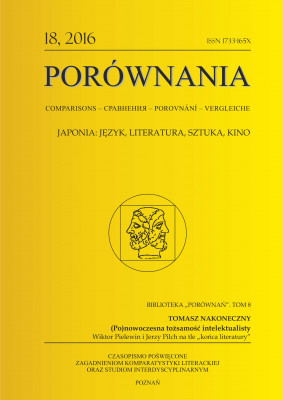Abe Kōbō – between modernism and postmodernism. Reflections on the novel Kangaroo notebook
While reminding Polish readers of the importance of the work of Abe Kōbō (1924-1993), a writer who passed away over twenty years ago, to Japanese literature, the author of this paper puts forward a proposal for the categorisation of Abe’s novels, stories and dramas. The author demonstrates that throughout his oeuvre, Abe used a convention typical of European Modernism. However, in his last novel, Kangarū nōto (Kangaroo notebook, 1991), which has been analysed in greater detail in this paper, the writer employed the topos of the absurd, fragmentation of the main character, and hybridisation i.e. literary devices used by the European and American Postmodern novel. Although many of those techniques had sporadically appeared in his earlier works, the structure of the fictional world and the protagonist of the Kangaroo notebook contains a sum of those devices. The nameless hero of the novel, afflicted by a mysterious disease that causes radish sprouts to grow on his shin, is advised by a doctor to travel to hot springs, and embarks on his last journey that takes him through underground corridors into the unknown.
| Article Title | Type | Size |
|---|---|---|
| 08 Mikolaj Melanowicz | [pdf] | [241 KB] |
